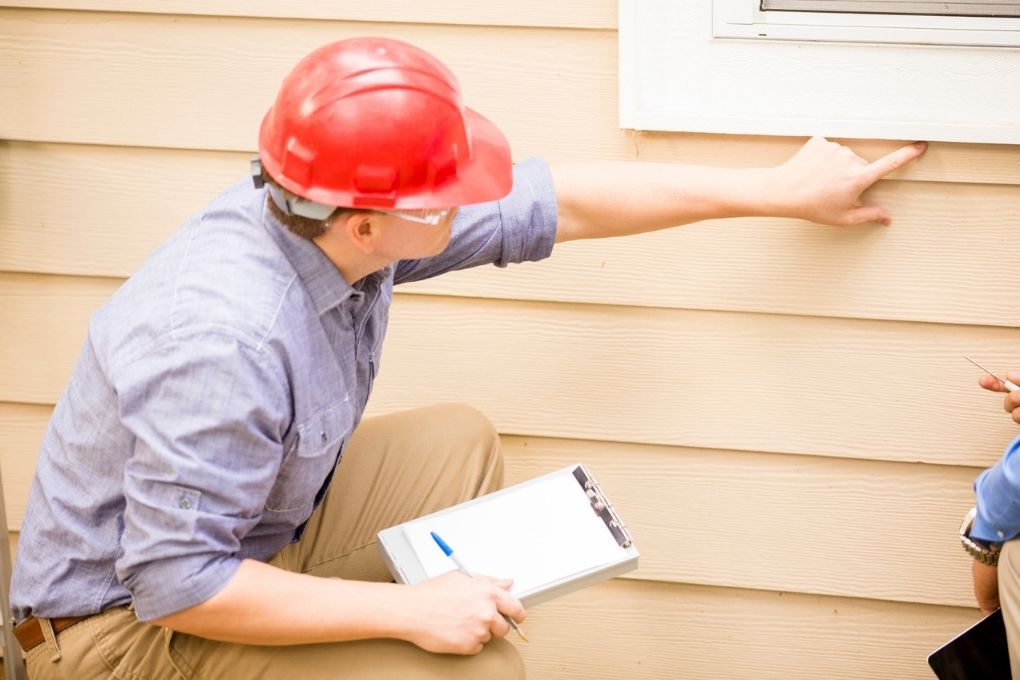What is WDO inspection? – Wood destroying organism inspection

Table of Contents
ToggleWhat Do WDO Inspectors Look For?
When you're buying a home or ensuring your property's safety, a WDO inspection is crucial. WDO stands for Wood Destroying Organisms, and inspectors are tasked with identifying any threats these creatures pose to your property. Let's delve into what inspectors search for and the types of organisms they're on the lookout for.
Types of Wood Destroying Organisms (WDOs)
Termites
Termites are among the most destructive pests, causing significant structural damage. There are two main types: Subterranean and Drywood termites.
Carpenter Ants
These ants don't eat wood but excavate it to build nests, causing substantial damage over time.
Carpenter Bees
Similar to carpenter ants, these bees bore into wood to create their nests, potentially weakening structures.
Powderpost Beetles
These tiny beetles lay eggs in wood, and their larvae feed on it, leading to weakened structures.
Wood-Decay Fungi (Wet Rot, Dry Rot)
Fungi thrive in moist environments and can cause wood to decay, compromising its integrity.

Signs of Infestation
Inspectors keep an eye out for various signs indicating WDO infestations, including:
- Shelter Tubes: Termites construct shelter tubes for protection, indicating their presence.
- Frass: Insect droppings, such as termite frass, are a clear indicator of infestation.
- Damaged Wood: Wood affected by WDOs may sound hollow or show galleries created by pests.
- Discarded Wings: Termites shed their wings, leaving them behind as they establish new colonies.
- Fungal Growth or Musty Odor: Fungi thrive in moist environments, emitting a distinct musty smell and causing visible growth.
Conditions Conducive to WDOs
Certain conditions facilitate WDO infestations, including:
- Moisture Problems: Leaks or poor drainage create damp environments ideal for WDOs.
- Wood-to-Soil Contact: Direct contact between wood and soil provides easy access for pests.
- Excessive Cellulose Debris: Accumulation of leaves, mulch, or other organic matter near structures attracts WDOs.
By understanding what inspectors look for and the conditions conducive to WDO infestations, homeowners can take proactive measures to protect their properties from these destructive organisms. Regular inspections and addressing conducive conditions promptly are key to maintaining a safe and structurally sound environment.
The WDO Inspection Process
Preparation for the Inspection
Before the WDO (Wood-Destroying Organisms) inspection takes place, there are a few steps you can take to ensure it goes smoothly:
Move Furniture Away from Walls: Clear space around the walls to allow the inspector easy access for thorough examination.
Clear Access to Crawlspaces and Attics: Ensure that crawlspaces and attics are accessible by removing any obstructions or clutter.
Inform Inspector of Any Known Concerns: If you're aware of any specific areas of concern, such as previous termite infestations or moisture issues, make sure to communicate these to the inspector before the inspection begins.
The Inspection Process
During the inspection, the inspector will meticulously examine both the exterior and interior of the property to identify any signs of wood-destroying organisms. Here's what they'll typically look at:
Exterior Inspection
Foundation: The inspector will inspect the foundation for any signs of damage or vulnerabilities that could allow pests to enter the structure.
Landscaping: They'll assess the landscaping around the property, looking for any wood-to-soil contact or moisture issues that could attract pests.
Soffits and Vents: Soffits and vents provide potential entry points for pests, so they'll be thoroughly examined for any signs of damage or infestation.
Interior Inspection
Walls, Floors, Ceilings: The inspector will inspect the interior of the property, including walls, floors, and ceilings, for any visible signs of wood-destroying organisms such as termites or wood decay fungi.
Crawlspaces and Attics: These areas are particularly vulnerable to pest infestations, so the inspector will carefully inspect them for any signs of activity or damage.
Tools Used For WDO Inspection
During the inspection process, the inspector may utilize various tools to aid in their assessment:
Flashlights: To illuminate dark or inaccessible areas for better visibility.
Probes: Used to investigate suspicious areas more closely, such as areas with soft or damaged wood.
Moisture Meters: Helps detect moisture levels in wood, which can indicate conditions conducive to wood-destroying organisms.
The WDO Inspection Report
Following the inspection, the inspector will provide a detailed report outlining their findings and recommendations:
Findings: The report will detail whether any wood-destroying organisms were found during the inspection, as well as the extent of any damage.
Recommendations for Treatment/Repairs: Based on their findings, the inspector may recommend specific treatments or repairs to address any issues identified during the inspection.
Cost Estimates (Optional): Some inspection reports may include cost estimates for recommended treatments or repairs, though this is not always provided.
By following these steps and understanding the WDO inspection process, homeowners can ensure their properties remain protected against wood-destroying organisms.
Additional Considerations for WDO Inspections

When it comes to Wood-Destroying Organism (WDO) inspections, there are several crucial factors to consider beyond the basic inspection process. Understanding these considerations can help homeowners safeguard their properties effectively.
Frequency of WDO Inspections
WDO inspections are recommended every 1-3 years, but the exact frequency may vary depending on factors such as location and specific risk factors. For instance, properties in areas prone to termite infestations or with a history of wood damage may require more frequent inspections.
Cost of WDO Inspections
The cost of WDO inspections can vary based on factors like the size of the property, its location, and the extent of the inspection needed. On average, nationally, WDO inspections can range from $100 to $300. However, it's essential to remember that investing in regular inspections can save significant costs by detecting issues early and preventing extensive damage.
Qualifications of WDO Inspectors
When hiring professionals for WDO inspections, it's crucial to ensure they are licensed and properly certified. Qualified inspectors have the knowledge and expertise to identify signs of wood-destroying organisms accurately. Look for inspectors who hold relevant certifications and memberships in reputable organizations related to pest control and home inspections.
Treatment Options for Wood Destroying organisms
After identifying wood-destroying organisms through inspections, homeowners may need to explore treatment options to address the issue effectively.
Termite Control Methods
Termite infestations often require immediate action to prevent further damage to the property. Common termite control methods include chemical treatments and bait systems. Chemical treatments involve the application of termiticides to the soil or directly onto affected areas, while bait systems use baits to attract and eliminate termites.
Carpenter Ant Control
Carpenter ants can also cause significant damage to wooden structures. Effective control measures may include eliminating food sources, sealing entry points, and using insecticides to target ant colonies. Professional pest control services can help identify the extent of the infestation and implement appropriate treatment strategies.
Wood Decay Fungus Remediation
Wood decay fungi can weaken the structural integrity of wood, posing risks to the safety of the property. Remediation efforts may involve removing affected wood, improving ventilation to reduce moisture levels, and applying fungicidal treatments to prevent further spread. Prompt action is essential to prevent extensive damage and ensure the long-term health of the structure.
In summary, prioritizing regular WDO inspections, understanding the associated costs, and ensuring the qualifications of inspectors are crucial steps for homeowners. Additionally, exploring effective treatment options can help mitigate the risks posed by wood-destroying organisms and protect the integrity of the property.
Frequently Asked Questions (FAQ’S)
Q. What is a WDO inspection?
A WDO inspection, or Wood Destroying Organism inspection, is a thorough examination of a property to assess any presence of pests such as termites, carpenter ants, and wood-boring beetles that can damage wooden structures.
Q. Why is a WDO inspection necessary?
A WDO inspection is necessary to identify any existing or potential infestations of wood-destroying organisms. This helps homeowners and buyers understand the condition of the property and take appropriate measures to prevent damage.
Q. When should a WDO inspection be conducted?
A WDO inspection should ideally be conducted before purchasing a property, during routine maintenance checks, or when signs of infestation are observed. It's also recommended before major renovations or constructions involving wood.
Q. Who typically conducts a WDO inspection?
WDO inspections are usually carried out by licensed pest control professionals or inspectors trained specifically in identifying wood-destroying organisms. These inspectors have the expertise to thoroughly assess properties for any signs of infestation.
Q. What does a WDO inspection report include?
A WDO inspection report typically includes details of any observed damage or infestation, the type of wood-destroying organisms present, their location, and recommendations for treatment or prevention measures to mitigate the issue.
Q. How long does a WDO inspection take?
The duration of a WDO inspection depends on the size and complexity of the property. Typically, it can take anywhere from 30 minutes to a few hours to conduct a thorough examination.
Q. Are there any preventive measures homeowners can take before a WDO inspection?
Homeowners can reduce the risk of wood-destroying organism infestations by keeping the property well-maintained, addressing moisture issues promptly, sealing cracks and crevices, and scheduling regular inspections by professionals.
Conclusion
A WDO inspection provides peace of mind by identifying potential problems before they become major issues. With a clean WDO report, you can rest assured that your home's foundation remains strong and free from these destructive pests and fungi.
Ready to schedule your WDO inspection? Utilize reputable resources like the National Pest Management Association (NPMA) to find qualified inspectors in your area. Don't hesitate to invest in the future of your home – a WDO inspection is a small price to pay for a significant return on your investment.
Other Termite Related Topics You May Be Interested In
- Bayer Premise: How To Use? Termiticide For Termite Control
- Anti-Termite Treatment Cost In India [2024]
- What if house failed termite inspection?
- What is WDO inspection - Wood destroying organism inspection
- Lethal TC: Chlorpyriphos 20% EC – The Ultimate Termite Terminator
- What Is Termite Treatment? Types & Methods
- What Do Flying Termites Look Like?
- What Causes Termites? Root Causes of Termite Infestation
- Termite Treatment For Walls – Complete Procedure
- Top 3 Termite Treatment Chemicals for Wood In India

